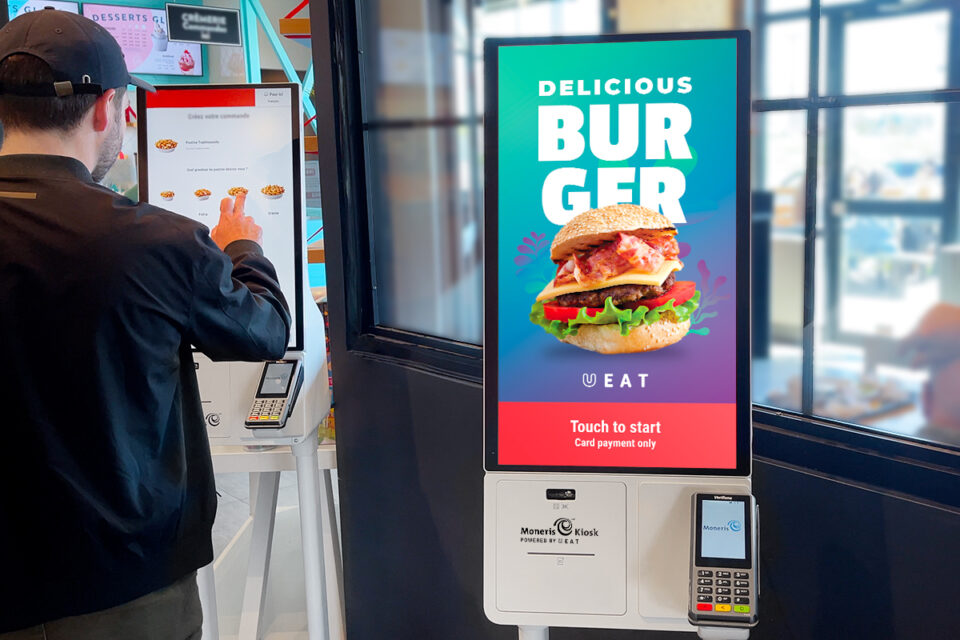As the restaurant industry grapples with a crushing labor shortage, many restaurant owners are turning to technology to help address operational challenges and improve customer satisfaction. One such technology that has gained popularity in recent years is self-service restaurant kiosks. While digital self-service kiosks are not new to the industry, they are increasingly being used by franchisors and franchisees as a strategy to overcome labor shortages, boost operational efficiency, and provide a better customer experience.
Why self-service kiosks are gaining popularity
There are several reasons why self-service kiosks are becoming more popular in the restaurant industry, particularly among franchises. One key factor is changing customer habits and mindsets. As inflation continues to rise, many customers are shifting away from high-end dining to more affordable options like fast-casual and quick-service restaurants.
In addition, many customers are shying away from delivery and turning to takeout options to save money on the higher prices generated by the fees third-party app charge restaurants, which can be as high as 30% of each order value. By offering self-service kiosks, restaurant owners can provide customers with more affordable options and a faster, more convenient way to order food.
Another reason for the growing popularity of self-service kiosks is the labor shortage that shows no signs of slowing down any time soon. With many restaurants struggling to recruit, train, and retain qualified front-of-the-house employees, self-service kiosks offer a way to minimize the impact of the labor shortage on customer service and operations. By automating the ordering process, restaurant owners can reassign front-of-the-house staff to other value-added tasks that elevate customer satisfaction, such as greeting, table service, food prep, etc.
Benefits of self-service kiosks for restaurant owners
Consumers have come to expect a certain level of technological sophistication in the establishments they frequent. Restaurants included. Digital self-ordering kiosks can help restaurants meet these expectations by offering a modern and enhanced customer experience, all while improving operations despite reduced staff.
- Increased efficiency and productivity
Self-service kiosks can help streamline the ordering process, reducing wait times and increasing overall service capacity during peak periods. During slower times, having permanent cashiers may not be optimal. Self-ordering kiosks can allow managers to assign already limited staff to other more productive tasks. By automating the ordering process, restaurant managers better utilize the staff they have on hand to foster retention.
Moreover, self-ordering kiosks can help reduce errors in the ordering process, improving order accuracy and reducing food waste. With digital kiosks, customers can place orders without the chance of miscommunication with a cashier or staff assigned to answer phone calls. Kiosks also feature fully visual menus and an intuitive ordering process that reduce customer mistakes in placing an order for the wrong items.
- Increased revenues and margins
Self-service kiosks can help increase restaurant revenues and profits in several ways. For one, they can enable restaurants to serve more customers in less time, generating an uptick in sales. This can be particularly useful during peak hours, when lines can be long and wait times can be frustrating for customers.
Moreover, self-service kiosks can help drive additional revenue through automatic upselling. Restaurateurs can configure their kiosks to gently upsell high-margin or more expensive menu items, and customers can confidently add them to their orders without the guilt or shame that a cashier will judge them. Rather than rely on employees to think about upselling occasionally, kiosks upsell every single time!
- Access to customer data and restaurant analytics
One of the most important aspects for a restaurant’s long-term success is access to customer data and sales analytics. Self-ordering kiosks can help provide this data by prompting customers to enter their contact information quickly and easily in exchange for exclusive deals and promos. This data can then be used by the restaurant for further marketing purposes. For example, by collecting customer data through self-service kiosks, restaurant owners can offer personalized promotions and incentives to customers, such as loyalty programs, discounts, and targeted marketing campaigns.
Also by tapping into data, franchises can analyze the popularity of menu items for better inventory management and a more in-depth understanding of customer preferences. Franchisors can gain better insight into customer demographics and how offerings could be tweaked based on franchisee locations.
Self-service restaurant kiosks are a game-changer for restaurants looking to overcome today’s challenges, from labor shortages to rising inflation and customer expectations. By providing a faster, more convenient way to order food, self-service kiosks can help boost efficiency and productivity, increase revenue and profits, and improve the overall customer experience.
As the restaurant industry continues to evolve, self-service kiosks are likely to play an increasingly important role in helping restaurants thrive in an increasingly competitive landscape. The Moneris® kiosk powered by UEATTM and designed by Samsung is a great solution to address the challenges of both franchisors and franchisees alike. Revealed at the CFA National Convention in Niagara Falls and at the RC Show in Toronto in April, Moneris and UEAT bring a new generation of self-ordering kiosks to Canada and make them affordable for all restaurants with a unique rental program. For less than $9 a day, the new all-in-one kiosk makes smart business sense. By eliminating the important upfront investment typically required, restaurants can deploy on-site self-ordering solutions faster and thus better deal with staffing challenges and ultimately improve customer satisfaction.


